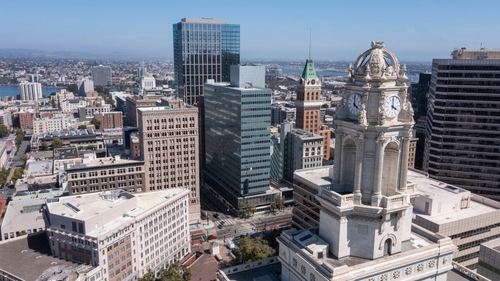A new report from the National Association of Realtors (NAR) revealed that 70% of the 185 metro areas evaluated by the organization posted double-digit annual home-price increases in first-quarter 2022.
That’s up from a share of 66% in fourth-quarter 2021 as price gains persist despite rapidly rising mortgage rates and a backtrack in home sales. The median sales price for an existing single-family home reached $368,200 in the first quarter, up 15.7% year over year (and up from 14.3% annual growth in the previous quarter).
“Prices throughout the country have surged for the better part of two years, including in the first quarter of 2022,” said Lawrence Yun, NAR’s chief economist. “Given the extremely low inventory, we’re unlikely to see price declines, but appreciation should slow in the coming months.”
Yun anticipates more inventory to enter the market in the quarters ahead, given that supply fell to a record low at the start of the first quarter. And with no signs of interest rate growth softening anytime soon, Yun also expects even more withdrawal of housing demand as affordability continues to worsen. The monthly mortgage payment on a typical existing single-family home with a 20% downpayment grew to $1,383 in the first quarter, up $319 — a 30% increase — from the same quarter in 2021.
On a typical starter home valued at $313,000, the monthly mortgage payment with a 10% downpayment increase to $1,363, also up 30% annually. First-time buyers typically spent 28.4% of their household income on mortgage payments, a level seen as unaffordable (above 25%) by NAR and other industry experts.
“Declining affordability is always the most problematic to first-time buyers, who have no home to leverage, and it remains challenging for moderate-income potential buyers as well,” Yun said.
Notably, the South region logged annual price appreciation of 20.1% in the first quarter — far and away the leader among all U.S. regions — with the Midwest up 8.5%, the Northeast up 6.7% and the West up 5.9%. Florida, in particular, saw large yearly price gains in larger metros such as Tampa (up 28.8%) as well as small and midsize markets like Punta Gorda (34.4%), Ocala (33.8%), Lakeland-Winter Haven (30.1%) and North Point-Bradenton-Sarasota (28%).
“Traditionally, homes in these markets were viewed as relatively inexpensive, but with recent migration trends, prices have increased significantly,” Yun said. “As more families relocate to various areas, we may see some surprising markets on our top 10 list.
“Price gains in many smaller, tertiary cities are now outpacing those in the more expensive primary and secondary markets,” he added. “This is due to buyers looking for less expensive housing and also a result of more opportunities to work from home, making relocation to smaller markets possible.”
Author
-

Arnie Aurellano is the former digital news editor at Scotsman Guide Inc.




